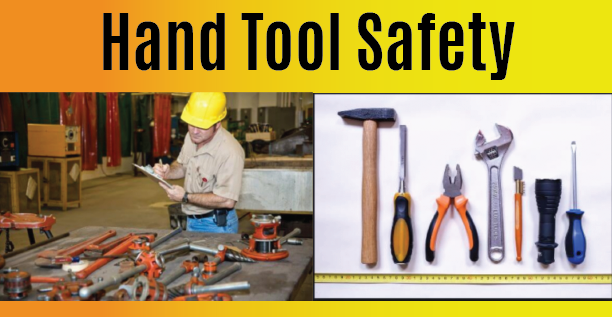News
Safety Toolbox Talk – Hand Tool Safety 8/24/22

Why is it important?
One of the key issues associated with hand tool safety is choosing and using the right tool. Unfortunately, many people use tools improperly, by trying to improvise with what they have on hand. Also, many people view hand tools as simple to use, so there is little concern for safety. In reality, a person using hand tools, no matter what they are, should always follow safety precautions.
What you need to know
Approximately 8% of industrial incidents result from the improper use of hand tools, according to recent studies. Injuries range from simple cuts, contusions and abraisions to punctures, fractures and even amputations! Below are examples of improper use of hand tools. Have you done any of these?
- Pushing rather than pulling a wrench to loosen a tight fastener
- Bending metal with undersized pliers, which can damage the pliers and the metal
- Holding an item you’re working on in one hand while attempting to remove a screw with a screwdriver with your other
- Cutting toward your body with a cutting tool
- Using dull cutting tools
- Working on materials not properly secured
- Using a tool not sized properly for the job (e.g., sockets that slip because they are slightly larger than the fastener)
Inspect Your Tools
Not only do you need to utilize the tool properly, but it needs to be in good shape. Take a moment before using any hand tool to ensure that is in good shape. Things to look for include:
- Guarding properly in place and in good condition
- A screwdriver with a worn or broken tip
- Any cutting tool with a dull surface or missing teeth
- Chisels with a mushroom head
- Tools that have had their handles or hand grips damaged or removed
If the tool you are about to use seems unsafe, report it to your leadership.



